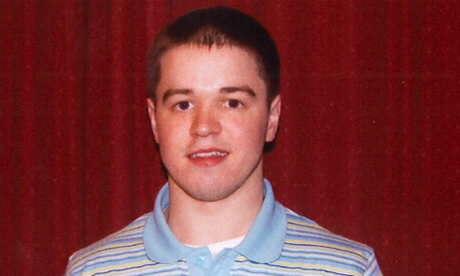How a community’s outcry led to campaign for justice for Sam Hallam

Sam Hallam at HMP Bullingdon
Five years ago in a public hall in Hoxton, London, it was the strength of a community loudly protesting the innocence of Sam Hallam that made a veteran justice campaigner believe something was terribly wrong.
Paul May, who worked on the campaign to free the Birmingham Six, had been asked to help out by friends of Hallam following his conviction in 2005 for the murder in a gang attack of Essayas Kassahun.
Kassahun died when he came to the aid of a friend, Louis Colley, who was being attacked in Old Street by a mob of youths over a perceived insult.
Before the attack, 40 to 50 youths had gathered in the area, and when the confrontation came it lasted a matter of seconds. Colley escaped but Kassahun was killed with a penetrating wound to the head. He walked a short distance to a nearby petrol station, where he collapsed. He died two days later in hospital.
Hallam was one of two individuals convicted of the killing in 2005. Six others were acquitted.
He was convicted on the say-so of two supposed witnesses. There was nothing else to link him to the scene at the junction of Bath Street and Old Street at 8.45pm on Monday 11 October 2004.
The key witness against him, Phoebe Henville, changed her account several times, and when challenged at Hallam’s trial in cross-examination as to why she had identified him, she said: “I just wanted someone to blame.” The other witness who told police Hallam was at the scene retracted his evidence at the trial, saying he could not identify him. Bilal Khelfa also stated he only named Hallam because he had been given his name by Henville. No forensic evidence linked Hallam to the scene and he denied being there on the night.
Hallam’s friends and family recruited May, knowing his record, and after a meeting with Hallam’s mother, Wendy, he agreed to attend a meeting in Regan Way community hall some five years ago.
“I expected a few people to be there,” May said. “When I turned up, there were more than 200 people inside. They were friends, neighbours, members of the family, people in the community who knew Sam. That was the thing that struck me – they were from his community, they knew Sam Hallam, they had known him since he was a child, and they knew he wasn’t the sort of guy to get involved in something like this.”
From that moment May was convinced. It was to take many more years – a failed criminal appeal in 2007; a play entitled Someone To Blame, which was performed at the King’s Head in Islington; the intervention of the Criminal Cases Review Commission (CCRC); and, most importantly, the combination of May’s experience and the sheer will of the community to finally bring justice for 24-year-old Hallam.
Matt Foot, Hallam’s lawyer, said: “The whole community knows he wasn’t there. It’s a solid working class community, people who don’t like it when things go wrong like this, it becomes a sore which effects them all.
“This case never should have gone to a jury. This is what it leads to – innocent people being put inside.”
When Hallam’s 2007 appeal failed, it was critical for May to get the CCRC to investigate the conviction. He knew the only way to do so was to come up with new evidence. Using the community as his detectives, he identified nine witnesses who had been at the scene, knew Hallam and made statements saying he was not there.
Presented with this evidence, commissioners from the CCRC agreed to examine the case and – unusually – instructed an outside force, Thames Valley police, to review the case. Detective Chief Inspector Steve Tolmie, a homicide detective with a long record of murder investigations, led the new inquiry. “We applied fresh eyes,” he told the Guardian. “We were given a very broad remit.” Tolmie would not be drawn publicly on the details, but what he uncovered showed that the original investigation by the Metropolitan police was unsatisfactory in many ways.
The Thames Valley team discovered that the Met did not carry out cell site analysis of Hallam’s phone and did not disclose that another young man, Tyrone Isaacs, who had been named as present at the scene, was in possession of a broomhandle with a nail in one end. Isaacs was also in possession of a mobile phone with no back – and Colley told police he was in possession of such a phone when the attack took place.
Police also did not disclose that it was rumoured that another man, also called Sam, was involved.
May said the Met inquiry was a “lacklustre, mediocre investigation” and was considering whether to refer the case to the Independent Police Complaints Commission.
Detective Chief Inspector Michael Broster who led the murder inquiry was criticised in court of appeal documents. Broster – who has since been promoted to a detective superintendent in the anti-terrorist squad – was criticised again two weeks ago by the coroner in the Gareth Williams trial for failing to disclose evidence and for being lacklustre in pursuit of lines of inquiry.
May said: “It is remarkable that exactly the same criticism that the coroner had of the officer in the Williams inquest are precisely the words we would use about the investigation into the murder. The whole investigation had a casual approach to disclosure and it led to an injustice which only now – seven years on – is being righted.”
guardian.co.uk © Guardian News & Media Limited 2010
Published via the Guardian News Feed plugin for WordPress.
